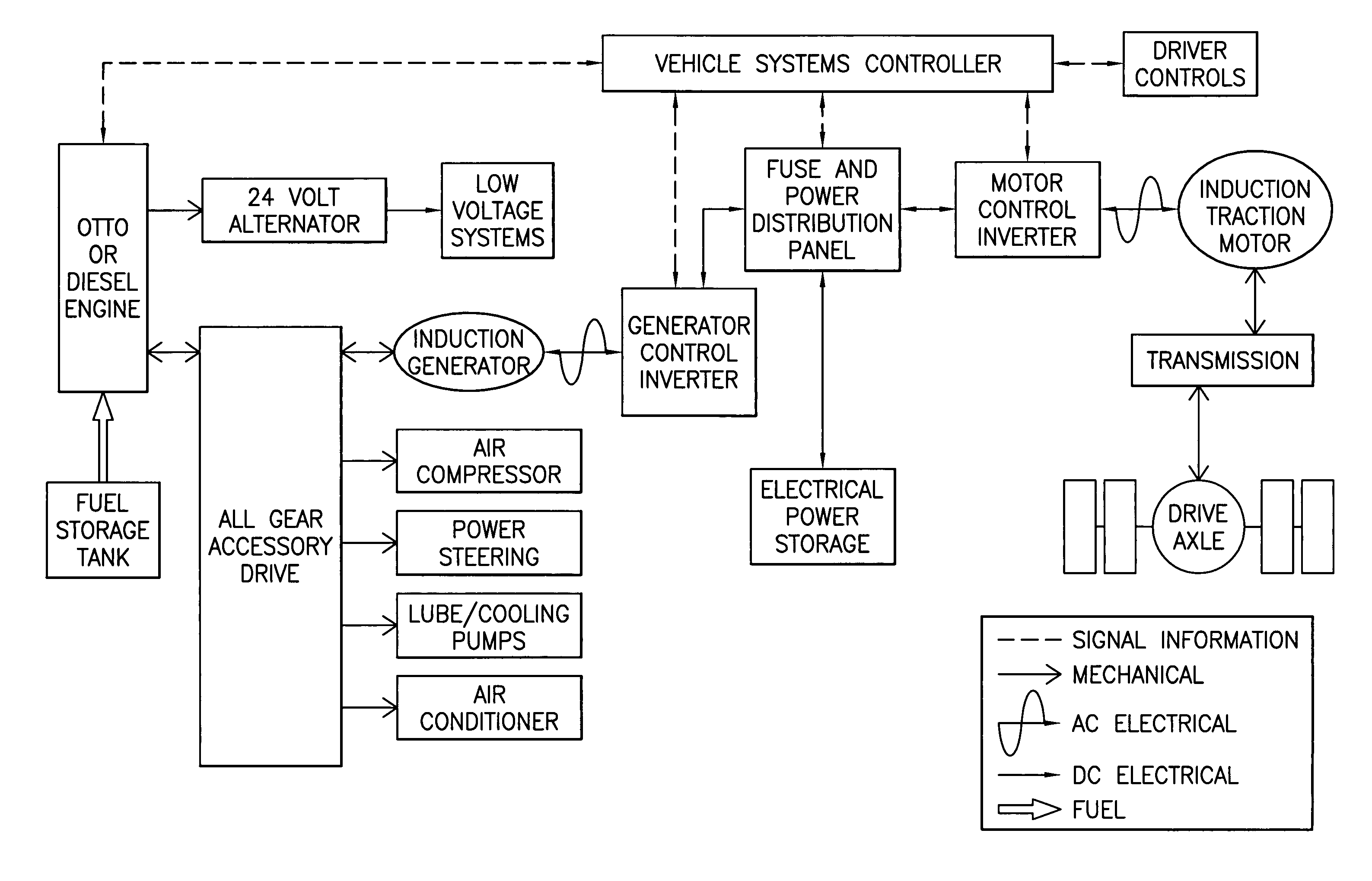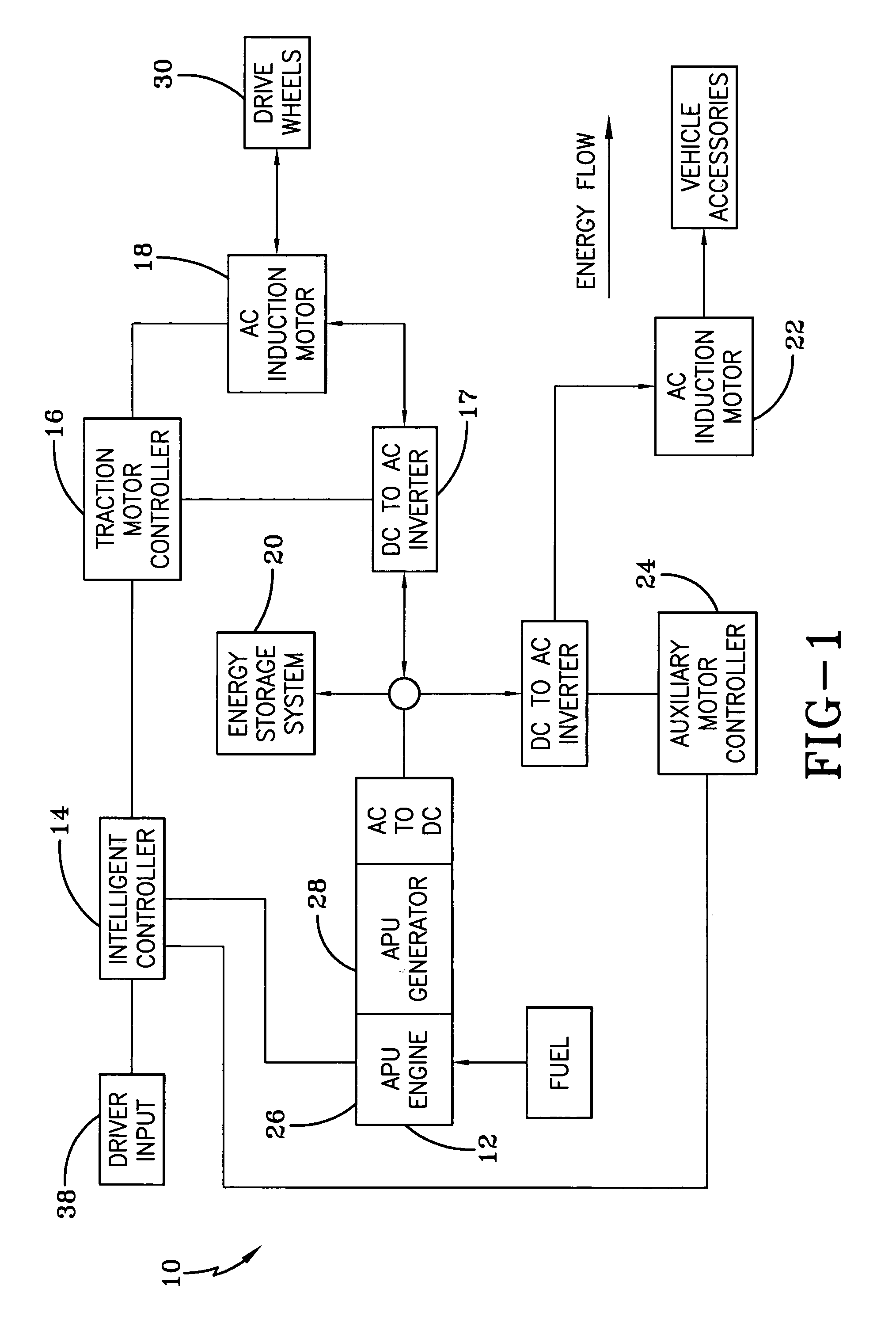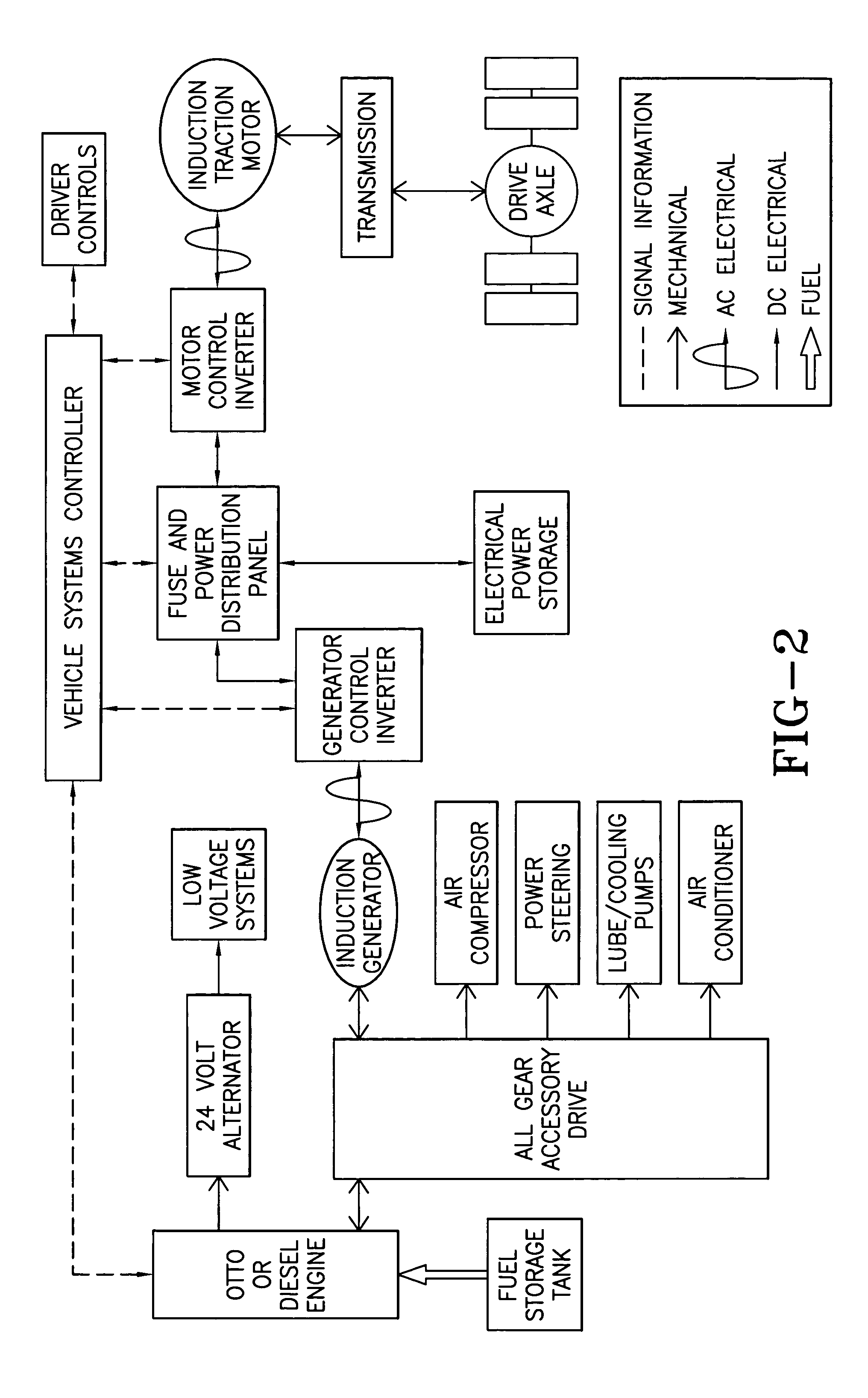Hybrid electric vehicle
- Summary
- Abstract
- Description
- Claims
- Application Information
AI Technical Summary
Benefits of technology
Problems solved by technology
Method used
Image
Examples
embodiment
Parallel Embodiment
[0074]FIG. 8 illustrates one embodiment of a parallel hybrid vehicle of the present invention. In contrast to those used in a battery hybrid system, the components and control strategies of the present invention have been designed to allow for a wide fluctuation in voltage without performance loss or nuisance trip outs. The system is designed to optimize APU / PPU performance with the least amount of capacitor bank requirement. The system does not require any device between the inverter drive and capacitor bank. In its parallel form, the three major components can be easily added or retrofitted to conventional engine drive systems to hold costs down. The parallel embodiment described below may be called an engine dominated, capacitor assist, parallel hybrid system.
[0075]The hardware for the parallel system preferably consists of three major components:
[0076]One or more low inductance traction motor(s), capable of delivering rated torque and power at the low voltage ...
PUM
 Login to View More
Login to View More Abstract
Description
Claims
Application Information
 Login to View More
Login to View More - R&D
- Intellectual Property
- Life Sciences
- Materials
- Tech Scout
- Unparalleled Data Quality
- Higher Quality Content
- 60% Fewer Hallucinations
Browse by: Latest US Patents, China's latest patents, Technical Efficacy Thesaurus, Application Domain, Technology Topic, Popular Technical Reports.
© 2025 PatSnap. All rights reserved.Legal|Privacy policy|Modern Slavery Act Transparency Statement|Sitemap|About US| Contact US: help@patsnap.com



